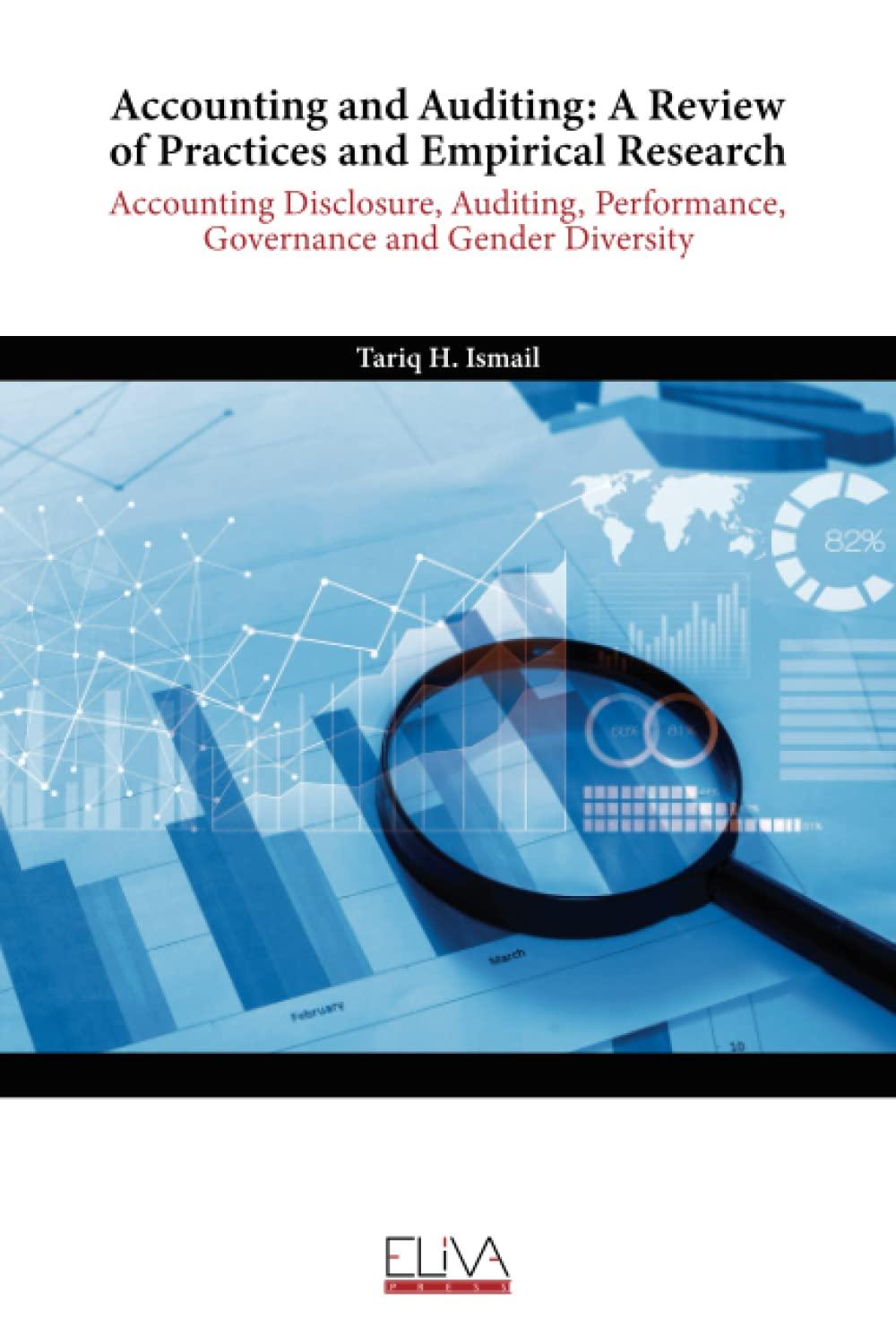Question
Part 1 On September 30, the bank statement of Fine Company showed a balance of $13,250. The following information was revealed by comparing the bank
Part 1
On September 30, the bank statement of Fine Company showed a balance of $13,250. The following information was revealed by comparing the bank statement to the cash balance in Fine's accounting records:
-
(1) deposits in transit amounted to $5,415
-
(2) outstanding checks amounted to $9,710
-
(3) a $780 check was incorrectly drawn on Fine's account
-
(4) NSF checks returned by the bank were $1,280
-
(5) bank service charge was $45
-
(6) credit memo for $190 for the collection of one of the company's account receivable
Based on the above information, the true cash balance was:
-
$9,735.
-
$9,880.
-
$8,600.
-
$10,135.
Part 2
Owen Company's unadjusted book balance at June 30 is $14,780. The company's bank statement reveals bank service charges of $125. Two credit memos are included in the bank statement: one for $1,520, which represents a collection that the bank made for Owen, and one for $210, which represents the amount of interest that Owen had earned on its interest-bearing account in June. Based on this information, Owen's true cash balance is:
-
$14,780.
-
$16,385.
-
$16,090.
-
$16,635.
Part 3
Singleton Company's perpetual inventory records included the following information:
| Date | Number of units and unit cost | Total cost | ||||||||
| January 1 | Beginning inventory | 310 | units | @ | $ | 12.00 | $ | 3,720 | ||
| March 4 | Purchase | 260 | units | @ | $ | 20.00 | 5,200 | |||
| September 28 | Purchase | 570 | units | @ | $ | 14.00 | 7,980 | |||
| Number of units sold during the year: 850 | ||||||||||
If Singleton uses the FIFO cost flow method, its cost of goods sold would be $13,240.
True or False?
Part 4
Koontz Company uses the perpetual inventory method. On January 1, Year 1, the companys first day of operations, Koontz purchased 1,350 units of inventory that cost $6.30 each. On January 10, Year 1, the company purchased an additional 1,600 units of inventory that cost $8.70 each. If Koontz uses a weighted average cost flow method and sells 1,500 units of inventory, the amount of inventory appearing on balance sheet following the sale will be approximately: (Round your intermediate calculations to one decimal place.)
A $11,020.
B $11,400.
C $13,050.
D $9,135.
Part 5
Melbourne Company uses the perpetual inventory method. Melbourne purchased 1,000 units of inventory that cost $5.75 each. At a later date the company purchased an additional 1,100 units of inventory that cost $6.25 each. If Melbourne uses a LIFO cost flow method, and sells 1,300 units of inventory, the amount of ending inventory appearing on the balance sheet will be:
-
$8,025.
-
$4,800.
-
$5,000.
-
$4,600.
Step by Step Solution
There are 3 Steps involved in it
Step: 1

Get Instant Access to Expert-Tailored Solutions
See step-by-step solutions with expert insights and AI powered tools for academic success
Step: 2

Step: 3

Ace Your Homework with AI
Get the answers you need in no time with our AI-driven, step-by-step assistance
Get Started


